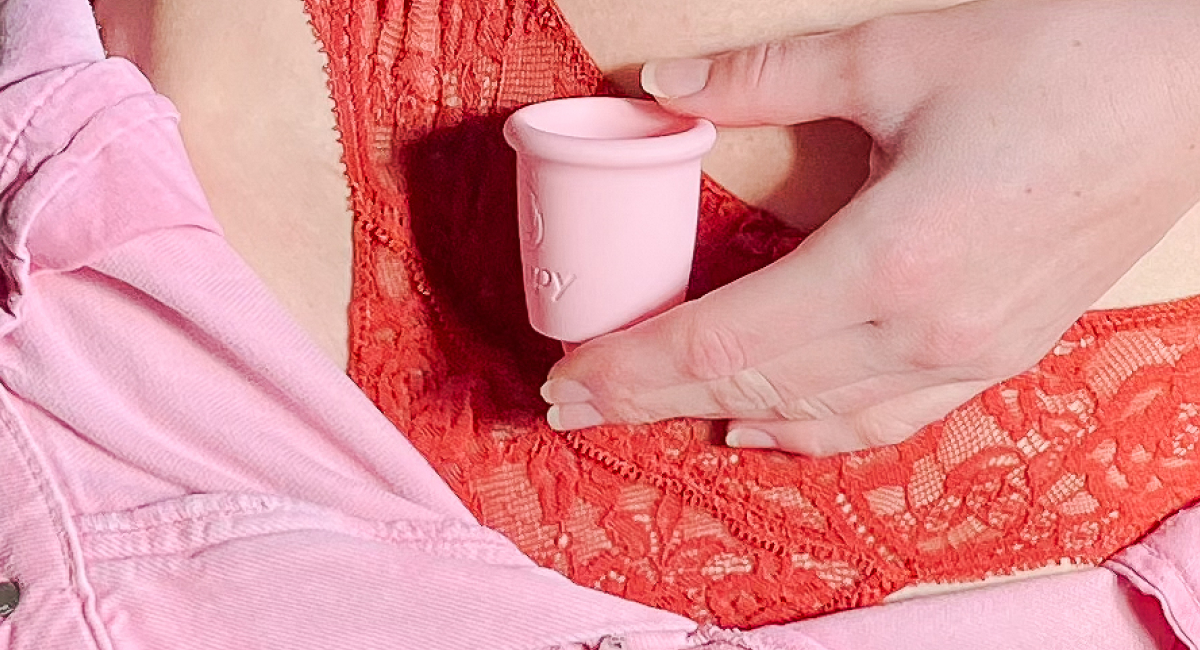
- Ontvang een gratis cadeau bij bestellingen vanaf €30
- Klanten beoordelen ons gemiddeld met een 4,6 / 5 (882 beoordelingen)

2020 has been one of the most challenging years in our history, and we have learned many lessons. One of those lessons is the importance of staying healthy and feeling comfortable. Therefore, it is natural that we begin to question how we take care of our bodies and what are the healthiest alternatives to do so. In these cases, we may ask, are menstrual cups really healthy? With complete certainty we can tell you: yes, and one of the best options today!
On the one hand, the menstrual cup is made of medical grade silicone, which is hypoallergenic and poses no danger to our body when in contact with the inner walls of the vagina. This material also does not degrade or oxidize and reduces the accumulation of bacteria, preventing unpleasant odors and vulnerability.
Although menstrual cups can be considered a safe menstrual product, one should be aware that T.S.S. (toxic shock syndrome), which is typically associated with the use of tampons, can also develop when using menstrual cups. A study done by Nonfoux et al. (2018) indicates a growth of Staphylococcus aureus and TSST-1 production on menstrual cups after 8 hours (in vitro). Even after 3 washes with water, the biofilm of Staphylococcus aureus persisted. Based on their study, they state, “A protocol with a second cup that allows the cup to be sterilized by boiling between uses should be recommended.” If you want to read more about T.S.S and how Beppy helps you reduce the risk, check out our blog post.
On the other hand, the menstrual cup, which has become a popular alternative, has been exposed to several studies by prestigious universities and research centers. These brought favorable health results and are an excellent choice in feminine hygiene products. One of these studies, titled: Use, leakage, acceptability, safety and availability of the menstrual cup, conducted by the Liverpool School of Tropical Medicine, published the analyses and results that promote the use of the menstrual cup worldwide, especially in developing countries and regions with sanitary problems.
It was also shown that the correct use of the menstrual cup, along with good hygiene habits, reduced the occurrence of candidiasis and vaginal and urinary infections in the group of women who participated in the study. Moreover, there appeared to be an exponential decrease in skin and internal irritations, compared to those recorded during and after the use of tampons and disposable pads.
Finally, the studies concluded that there was no increase in cases of endometriosis or negative effects that could affect sexual and reproductive health, indicating that the use of the menstrual cup is safe and beneficial, both for users who have not yet begun their sexual life and for women who have already had one or more pregnancies and are leading an active sexual life.
It is very important that you remember that menstrual cups must meet the same regulations as any other feminine hygiene product, which varies from country to country. By considering these factors, such as the quality and durability of the silicone, you are assured of a good investment for both your finances and your health.
1. van Eijk, A. M. (2019, Jul 16). Menstrual cup use, leakage, acceptability, safety, and availability: a systematic review and meta-analysis. The Lancet Public Health. https://www.thelancet.com/journals/lanpub/article/PIIS2468-2667%2819%2930111-2/fulltext
2. Nonfoux, L. et al (2018, June). Impact of currently marketed tampons and menstrual cups on Staphylococcus aureus growth and toxic shock syndrome toxin 1 production in vitro. Applied and Environmental Microbiology. https://pubmed.ncbi.nlm.nih.gov/29678918/
Get the latest news on menstrual freedom straight to your inbox!
HQ Beppy, Netherlands
Signalman 1-3
3034 KH Rotterdam
[email protected]
+31 (0)10 467 65 73 (9.00 – 17.00)
Chamber of Commerce: 24123466
Beppy, Belgium
9A Countess Elisabethlaan, P.O. Box 77
2320 Hoogstraten
[email protected]
+32 (0)78 158 349 (9.00 – 17.00)





